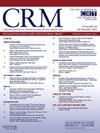Association of revascularization with risk of ventricular arrhythmias in patients with chronic total occlusion of coronary arteries: Systematic review and meta-analysis
IF 1.6
Q3 CARDIAC & CARDIOVASCULAR SYSTEMS
引用次数: 0
Abstract
Background
Coronary chronic total occlusion (CTO) can result in ischemic cardiomyopathy which may create substrate supportive of ventricular arrhythmias (VA). The purpose of this meta-analysis is to evaluate the association of CTOs with risk of ventricular arrhythmias (VAs) and to assess the utility of CTO percutaneous coronary intervention (PCI) in this setting.
Methods
A literature search was conducted for studies reporting an association between CTOs and VAs and PCI VAs among patients with CTO. VAs were defined as ventricular tachycardia, ventricular fibrillation, sudden cardiac death, and appropriate implantable cardiac defibrillator therapy. The search included the following databases: Ovid MEDLINE, EMBASE, Web of Science, and Google Scholar. The search was not restricted to time or publication status.
Results
Nine studies with 3068 participants (1405 with CTOs and 1663 with coronary artery disease [CAD]) met inclusion criteria. CTOs were associated with significantly higher risk of VAs compared with patients with CAD without CTOs (OR 2.25, 95 % CI 1.92–2.64; p < 0.01). Three studies with 1830 patients with CTOs (970 revascularized, 860 on optimal medical therapy) met inclusion criteria for evaluating the association of CTO revascularization and VAs. CTO PCI was associated with a significantly lower risk of VAs compared with patients treated with optimal medical therapy.
Conclusions
Patients with CTOs appear to have a higher burden of VAs compared with patients with CAD without CTOs. Revascularization of CTOs was found to be associated with significant reduction in risk of VAs, however additional high-quality studies are required to further evaluate this association.
慢性冠状动脉全闭塞患者血运重建与室性心律失常风险的关系:系统回顾和荟萃分析
背景:冠状动脉慢性全闭塞(CTO)可导致缺血性心肌病,这可能产生支持室性心律失常(VA)的底物。本荟萃分析的目的是评估CTO与室性心律失常(VAs)风险的关系,并评估CTO经皮冠状动脉介入治疗(PCI)在这种情况下的实用性。方法:对报道CTO患者CTO与VAs和PCI VAs之间关系的研究进行文献检索。VAs定义为室性心动过速、室性颤动、心源性猝死和适当的植入式心脏除颤器治疗。检索包括以下数据库:Ovid MEDLINE、EMBASE、Web of Science和谷歌Scholar。搜索不限于时间或出版状态。结果:9项研究3068名参与者(1405名CTOs患者和1663名冠心病患者)符合纳入标准。与没有cto的CAD患者相比,cto与VAs风险显著升高相关(OR 2.25, 95% CI 1.92-2.64;p结论:与没有cto的CAD患者相比,cto患者似乎有更高的VAs负担。cto的血运重建被发现与VAs风险的显著降低相关,但需要更多的高质量研究来进一步评估这种关联。
本文章由计算机程序翻译,如有差异,请以英文原文为准。
求助全文
约1分钟内获得全文
求助全文
来源期刊

Cardiovascular Revascularization Medicine
CARDIAC & CARDIOVASCULAR SYSTEMS-
CiteScore
3.30
自引率
5.90%
发文量
687
审稿时长
36 days
期刊介绍:
Cardiovascular Revascularization Medicine (CRM) is an international and multidisciplinary journal that publishes original laboratory and clinical investigations related to revascularization therapies in cardiovascular medicine. Cardiovascular Revascularization Medicine publishes articles related to preclinical work and molecular interventions, including angiogenesis, cell therapy, pharmacological interventions, restenosis management, and prevention, including experiments conducted in human subjects, in laboratory animals, and in vitro. Specific areas of interest include percutaneous angioplasty in coronary and peripheral arteries, intervention in structural heart disease, cardiovascular surgery, etc.
 求助内容:
求助内容: 应助结果提醒方式:
应助结果提醒方式:


